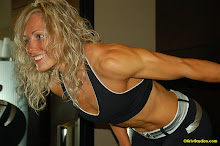February is the month of sweet hearts, beating hearts, candy hearts, and sometimes, broken hearts.
Do you know what your heart is telling you?
Heart rate is the best indicator of exercise intensity. When you exercise, your heart beats faster to meet the demand for more blood and oxygen by the muscles of the body. The more intense the activity, the faster your heart will beat. Therefore, monitoring your heart rate during exercise can be an excellent way to monitor the intensity of your workout.
There are a number of methods to monitor the heart rate.
Manually, a heart rate can be determined by finding the radial pulse at the base of the thumb of either hand. By using the first two fingers of one hand and locating the artery, count the number of beats in a 10-second period. To determine the heart rate in beats per minute, multiply the number of beats per 10-seconds by six. An accurate pulse count is crucial when monitoring exercise intensity manually.
If you do not want to count your heart beats, another way to determine your heart rate is by holding on to heart rate sensors which are located on some pieces of cardiovascular equipment.
I find that the easiest way to monitor heart rate is by using a heart rate monitor. That way you are free to move how you want and do not have to interrupt your workout to count your pulse, the monitor will do it for you.
The question is, What does your heart rate mean? Are you working out too hard, or not hard enough? There is a range of 5 heart rate intensity zones that are safe and effective for promoting cardiovascular benefits. In order to figure out at which intensity you should be working out at you need to be familiar with a few terms.
1. Aerobic
The body's ability to utilize oxygen and therefore obtain more energy through increased fat burning.
2. Aerobic Base (AB)
This is the number of beats per minute (bpm) at which you are the most efficient at burning fat calories.
3. Anaerobic
An increase use of sugar for energy due to lack of sufficient oxygen. The body can only store a limited supply of sugars in the muscles, therefore, sugar gets used up quickly and activity cannot be sustained for a very long time.
4. Anaerobic Threshold (AT)
This is the number of bpm at which you stop primarily burning fat for energy and start burning mostly sugars for energy.
As mentioned before, there are 5 different training zones. Zones 1-3 are the fat burning zones and zones 4-5 are the sugar burning zones. Typically ones AB is somewhere between zones 1& 2. The AT is the cut off point between zones 3 & 4. At what heart rate each zone begins and ends varies from person to person depending on one's conditioning. Just as no two people have the same fingerprints or DNA, no two people have the exact same response to exercise. Two people can be working out at the same heart rate, and depending on how fit they are, one person may be burning all fat calories, while the there person is working to hard and burning sugar calories. A simple exercise assessment, the MAP Test, can determine your unique metabolic response to exercise, including your AB, AT, and 5 training zones. The idea is to enhance your performance by getting your AB as close to your AT as possible and increase your AT by training in the correct heart rate zones. Thereby, maximizing your body's ability to burn fat. A positive side effect of this process is effective weight loss.
(For more information regarding MAP Testing and which heart rate monitor is best for your needs, please contact Amy Gilgenbach).
Choose what You want to do in Life

Quote of the Month
- The Important thing is this: To be able at any moment to sacrifice what we are for what we could become. -Charles DuBois
About Me

- Amy Gilgenbach
- Eden Prairie, Minnesota, United States
- I have been helping people achieve fitness success by incorporating a creative variety of exercises into safe, progressive workouts that target their specific needs. I graduated from the Univeristy of Wisconsin - La Crosse with a degree in sport management and a coaching emphasis. I am a certified personal trainer through The National Strength and Conditioning Association (NSCA-CPT) and the National Acedemy of Sports Medicine (NASM). I compete in state and national level Fitness competitions, earning the title of 'Miss Fitness Wisconsin' on 3 seperate occasions. I know what it takes to convert a worn-out body into an energized, healthy, toned physique and will constantly challenge you to reach your maximum potential.
What are you going to change this week?
I Can Help!
Now that you have set a new goal, you need to tell others so that they can hold you accountable. Checking in weekly with a personal trainer is a great way to stay focused on your goal. They can also offer tips on how to incorporate changes into your lifestyle. If you are not sure what to do, it is time to start working with a certified personal trainer. Get Serious about getting in shape! A personal trainer is a resource for the latest information on health and fitness and can teach you how to make the most out of your time. One-on-One coaching educates, motivates, and challeneges you. A trainer will custom tailor your exercise plan, work around your schedule, add variety, use the latest innovative techniques, and motivate you to be your best. Reach your goals; invest in a trainer.
Contact me today!
Contact me today!
Labels
- Alcohol (1)
- AutoShip (4)
- Calories (2)
- Goals (3)
- Gym Bag Necessities (1)
- Health (2)
- Motivation (10)
- Nutrition (11)
- Recipes (2)
- Sleep (1)
- Stress (3)
- Supplements (7)
- Training (2)
- Water (1)